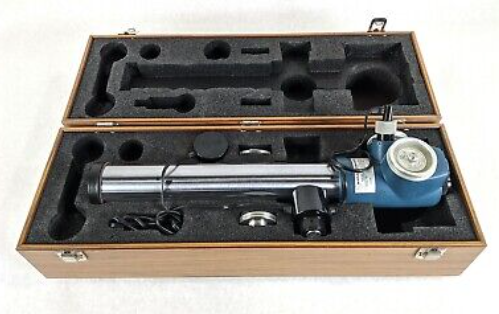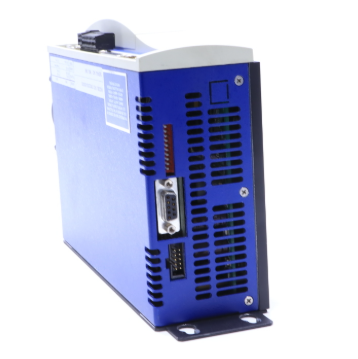Study on ecological restoration status and treatment countermeasures of abandoned mines left over from history
1.3 Low land reclamation rate
Some developed countries have a long history of mining, and their governance concepts, measures and technologies started earlier. Since 1940, Germany has been reducing the destruction of the ecological environment in the mining process, while taking into account the ecological changes and residents' requirements for the environment from a macro perspective to carry out mine restoration and management. After 1960, some countries began to develop a variety of restoration methods for ecological restoration, and technology was at the forefront. Land reclamation is the main way of ecological restoration in mining areas. The land reclamation rate in European and American countries is more than 80%, while the land reclamation rate in Chinese mining areas is only about 20%, which is far lower than the international average level of 50%-70%. The State Council promulgated the "Regulations on Land Reclamation" in 1989, the "Regulations on Land Reclamation" in 2011, and the "Measures for the Implementation of the Regulations on Land Reclamation" in 2019. In the same year, the "Regulations on the Protection of the Geological Environment of Mines" were revised, and the State's policies, funding, governance methods and priorities for mine restoration have gradually improved and improved with the development of The Times.

1.4 Construction Difficulties
Before the mine restoration construction, a series of data such as start-up procedures, planning instructions, environmental impact reports and approvals, geological disaster assessment reports, geological exploration reports, etc., are the "blocking points" of mine treatment projects, such as tedious data preparation and approval procedures, difficult approval, and time-consuming handling. During the construction process, the local government needs to coordinate multiple relationships among departments, construction units, mining areas, and villagers. Most of the land occupied by the mining area is collective land. After construction, farmers need to deal with the issue of land transfer rent payment. Villagers are worried about the quality of land after reclamation and are unwilling to accept reclaimed land and other social problems.
2. Repair existing problems and improve measures
2.1 Repair Mechanism
The central and local governments attach great importance to the ecological restoration of mines, and have introduced more detailed systems to promote mine restoration. Local governments should strengthen the implementation of policies to maximize the enthusiasm of mining enterprises and various social resources. Local governments have rationalized the powers and obligations among departments related to mine restoration, formed a scientific and standardized system with natural resources departments as the main body and the active participation of ecological environment, forestry, water conservancy and other departments, refined the constraint and incentive mechanism, promoted coordination and communication among departments, and improved the enforcement power of ecological environment and forestry departments in the evaluation and supervision of ecological restoration quality. Improve the restoration speed and treatment rate of historical mining areas.
2.2 Restoration Funds
There is a huge demand for mine restoration funds, and the restoration funds of historical mines are more short, requiring financial allocation support, the total amount of special funds allocated by the central government is small, and the matching funds of local and enterprise are not high. As of the end of 2017, the central government had invested a total of about 30 billion yuan, and local governments and enterprises had raised a total of nearly 70 billion yuan, which could not meet the needs of large-scale mine restoration, and the funding problem had become a bottleneck restricting the ecological restoration of mines. The sources and channels of special funds for mine ecological restoration are not perfect, and mining laws and regulations give natural resources, forestry, ecological environment, water conservancy and other departments the right to collect fees related to ecological damage, and the lack of centralized management of fees has caused scattered uses and not all of them are used for mine restoration. The effect of ecological restoration is slow, the income is small, the profit method is single, and the participation of social capital is low. The Regulations on the Protection of Mine Geological Environment issued by the former Ministry of Land and Resources established a deposit system for the restoration of mine environmental governance, which is only applicable to newly built mines or mines under development, and does not include the environmental governance and ecological restoration of historical mines.
The central government will increase support for special funds for the restoration of abandoned mines left over from history, and promote the availability of matching funds from local governments and enterprises. The ecological damage fees collected by local government departments shall be centrally managed and incorporated into a unified special account for ecological restoration, and the supervision of funds shall be strengthened and earmarked for special purposes to ensure that all fees are used for mine restoration. Drawing on the successful experience of water environment (PPP) governance projects, the state encourages social capital to participate in mine ecological restoration, and supports and helps enterprises in project implementation, tax incentives, financial subsidies, etc., and implements the reward mechanism of "who repairs, who benefits". Expand the scope of application of the deposit, and use a certain proportion of funds for the restoration of abandoned mines left over from history to further meet the needs of national and local special funds for mine restoration.
- EMERSON
- Honeywell
- CTI
- Rolls-Royce
- General Electric
- Woodward
- Yaskawa
- xYCOM
- Motorola
- Siemens
- Rockwell
- ABB
- B&R
- HIMA
- Construction site
- electricity
- Automobile market
- PLC
- DCS
- Motor drivers
- VSD
- Implications
- cement
- CO2
- CEM
- methane
- Artificial intelligence
- Titanic
- Solar energy
- Hydrogen fuel cell
- Hydrogen and fuel cells
- Hydrogen and oxygen fuel cells
- tyre
- Chemical fiber
- dynamo
- corpuscle
- Pulp and paper
- printing
- fossil
- FANUC
- Food and beverage
- Life science
- Sewage treatment
- Personal care
- electricity
- boats
- infrastructure
- Automobile industry
- metallurgy
- Nuclear power generation
- Geothermal power generation
- Water and wastewater
- Infrastructure construction
- Mine hazard
- steel
- papermaking
- Natural gas industry
- Infrastructure construction
- Power and energy
- Rubber and plastic
- Renewable energy
- pharmacy
- mining
- Plastic industry
- Schneider
- Kongsberg
- NI
- Wind energy
- International petroleum
- International new energy network
- gas
- WATLOW
- ProSoft
- SEW
- wind
- ADVANCED
- Reliance
- YOKOGAWA
- TRICONEX
- FOXBORO
- METSO
- MAN
- Advantest
- ADVANCED
- ALSTOM
- Control Wave
- AB
- AMAT
- STUDER
- KONGSBERG
- MOTOROLA
- DANAHER MOTION
- Bently
- Galil
- EATON
- MOLEX
- Triconex
- DEIF
- B&W
- ZYGO
- Aerotech
- DANFOSS
- KOLLMORGEN
- Beijer
- Endress+Hauser
- MOOG
- KB
- Moxa
- Rexroth


Email:wang@kongjiangauto.com

















































































































